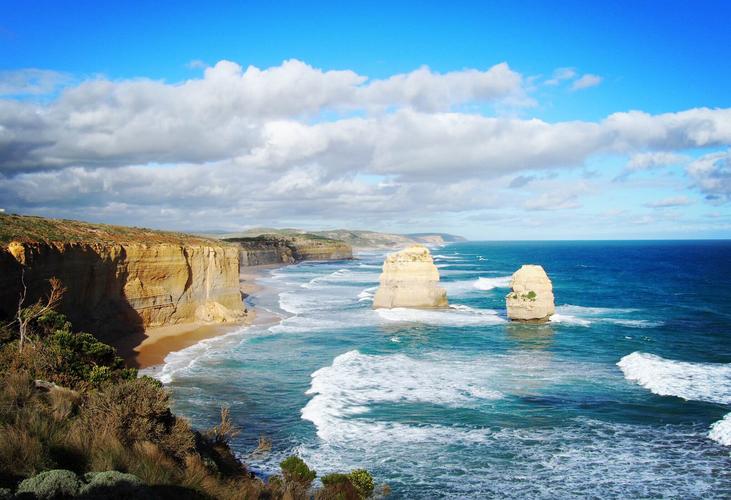Global Travel Information
Delphi, Greece
The Omphalos of the World: Delphi’s Enduring Whisper
Nestled in the dramatic folds of Mount Parnassus, cradled by steep cliffs and overlooking a sea of silvery olive groves that stretch toward the Corinthian Gulf, lies a place that once commanded the awe of the ancient world. Delphi is not merely an archaeological site; it is a profound idea, a spiritual vortex where myth, power, divinity, and humanity converged. To walk its Sacred Way is not just a tour through ruins but a pilgrimage into the very psyche of classical civilization, to the spot the ancients believed was the center of the universe—the omphalos, the navel of the world.

The origins of Delphi’s sanctity are shrouded in primal myth. Before it was sacred to Apollo, the site was associated with Gaia, the Earth Mother. The story tells of a monstrous serpent, Python, son of Gaia, who guarded the chthonic oracle there. The youthful god Apollo, embodying light, reason, and order, journeyed from Mount Olympus to slay the beast, establishing his own oracle and sanctuary. This mythic transition from the chthonic (earthly and intuitive) to the Olympian (celestial and rational) encapsulates a fundamental shift in Greek thought. Yet, Delphi never entirely lost its primal, mysterious character. The Pythia, the priestess who served as the oracle, continued her prophetic rites in a chamber above a fissure in the earth from which intoxicating vapors were said to rise, a direct link to the realm Apollo had supposedly conquered.
This was the draw for centuries. From humble farmers to the most powerful kings, the world flocked to Delphi seeking guidance. The process of consultation was elaborate and fraught with ritual. After purification in the Castalian Spring and a sacrifice to ensure the gods were favorable, the supplicant would present a question to the priests. The Pythia, typically a local woman of good character, would undergo her own preparations before descending into the adyton, the inner sanctum of the Temple of Apollo. There, perched on a tripod over the sacred chasm, breathing in the ethereal pneuma (vapors), she would fall into a divine frenzy. Her utterances—often incoherent cries and mutterings—were interpreted and versified by the attending priests into the famous ambiguous prophecies.
This ambiguity was the source of the oracle’s power and its genius. When the wealthy King Croesus of Lydia asked if he should wage war on the Persian Empire, the oracle reportedly said that if he did, he would destroy a great empire. Confident, he attacked, only to be defeated. The great empire he destroyed was his own. The advice was not a straightforward command but a riddle that demanded wisdom and self-awareness from the questioner. It forced leaders to confront their own ambitions and follies. In this way, Delphi was less about predicting a fixed future and more about revealing the complex interplay of human action and divine will, a place where mortals were reminded of their limits.
The sanctity of the site was internationally recognized. The Amphictyonic League, a powerful religious association of twelve Greek tribes, administered the sanctuary and organized the Pythian Games, one of the four Panhellenic crown games, second in prestige only to the Olympics. Athletes, artists, and musicians from every corner of the Greek world gathered here to compete, their victories bringing eternal glory to themselves and their city-states.
This Panhellenic status is physically manifested in the spectacular Treasure Houses that line the lower section of the Sacred Way. These were not mere storehouses but exquisite miniature temples built by city-states like Athens, Thebes, and Siphnos to house their lavish offerings to Apollo and, crucially, to showcase their wealth and power to all of Greece. They were statements of political prestige in a sacred setting. Further up the path, the magnificent Temple of Apollo, with its famous maxims “Know Thyself” and “Nothing in Excess” inscribed on its façade, served as the literal and philosophical heart of the sanctuary. These injunctions were a permanent reminder that wisdom began with understanding one’s own nature and limitations.
Beyond the temple, the path culminates at the ancient theatre, with its breathtaking views of the entire valley, and higher still, the well-preserved stadium where the athletic contests were held. The climb itself is symbolic—an ascent from the worldly rivalries of the treasure houses toward the higher pursuits of culture, athletics, and pure mountain air, closer to the realm of the gods.
The decline of Delphi was gradual, tied to the waning of the pagan world. With the rise of Christianity and the official suppression of pagan rites by Emperor Theodosius I in the late 4th century AD, the oracle fell silent. The site was largely abandoned, its stones quarried for nearby villages, its memory fading into local legend.
Yet, Delphi’s whisper never completely ceased. The rediscovery and systematic excavation by the French School in Athens in the late 19th century brought it back into the light. Today, as visitors traverse the same stones once walked by Plato, Alexander the Great, and Cicero, the magic persists. It is a place that forces introspection. Standing amidst the broken columns, with the wind sighing through the olive trees and the eagles circling the Phaedriades cliffs, one can almost feel the ancient presence. It is the lingering energy of a place where humanity, in all its ambition, fear, and hope, dared to ask the gods for answers and was given riddles in return—not to frustrate, but to teach. Delphi endures not as a monument to certainty, but as a timeless sanctuary for the eternal questions.
相关文章
- Elbe River Amusement Parks: Rides with River Views
- Elbe River Camping Spots: Pitch a Tent by the Water
- Elbe River Glamping Sites: Luxury Camping Along the Banks
- Elbe River RV Parks: Stay in Your Camper Near the River
- Elbe River B&Bs: Cozy Accommodations with a Personal Touch
- Elbe River Hostels: Budget Stays for Young Travelers
- Elbe River Business Travel Guide: Meetings & Events Near the Water
- Elbe River Conference Venues: Spaces with River Views
- Elbe River Wedding Venues: Tie the Knot by the Water
- Elbe River Funeral Services: Respectful Locations Along the Banks
发表评论
评论列表
- 这篇文章还没有收到评论,赶紧来抢沙发吧~


